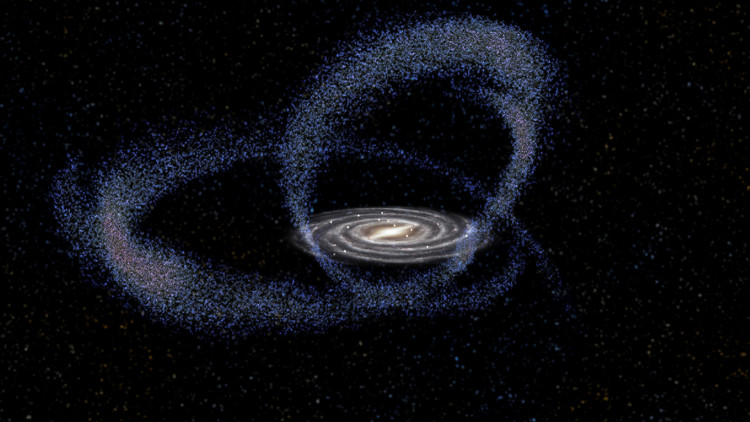Astronomers have successfully used deep learning to discover 250 new stars in the Milky Way, but are believed born outside our galaxy.
Caltech researcher Lina Necib and her team have named the collection Nyx -- the Greek goddess of the night. According to Necib, the newly discovered stars are likely remnants of a dwarf galaxy that collided with the Milky Way eons ago.
To develop the deep learning tech used to discover Nyx, Necib and her team observed stars across a galaxy simulation designed by the Feedback in Realistic Environments (FIRE) project. These simulations include everything scientists know about how galaxies form and evolve. Starting from the virtual equivalent of the beginning of time, the simulations form galaxies that look and behave like our own.
"We asked the neural network, 'Based on what you've learned, can you label if the stars were accreted or not?'" said Necib.
From simulations, scientists are able to distinguish which stars are born in the host galaxy from those formed through the merging of galaxies. The labeling is then used to teach AI to recognize where a star originated.
The model is then applied to data collected by the Gaia satellite in order to come up with a detailed map of approximately 1 billion stars. The Gaia Space Observatory launched in 2013 by the European Space Agency, which aims to create an extremely precise 3D map of stars found in the Milky Way and beyond.
To test the AI model, the team first tested if it could identify already known features in the data, like "the Gaia sausage," the remnants of a collision between the Milky Way and a dwarf galaxy billions of years ago. The merge essentially ripped the dwarf apart, and its stars scattered into the shape of a sausage as a result.
The model found the sausage stars with ease and, along with it 250 other stars. Once confirmed that the collection of stars has not been cataloged before, Necib got the green light to name it.
Necib's next mission is to continue observing the Nyx collection using ground-based telescopes. From there, the team will be able to figure out the stream's chemical makeup, when it arrived in the Milky Way galaxy, and other essential details.
Gaia's next data release in 2021 will include more information about 100 million stars found in the simulations, which will provide us with the knowledge of more accreted clusters.



